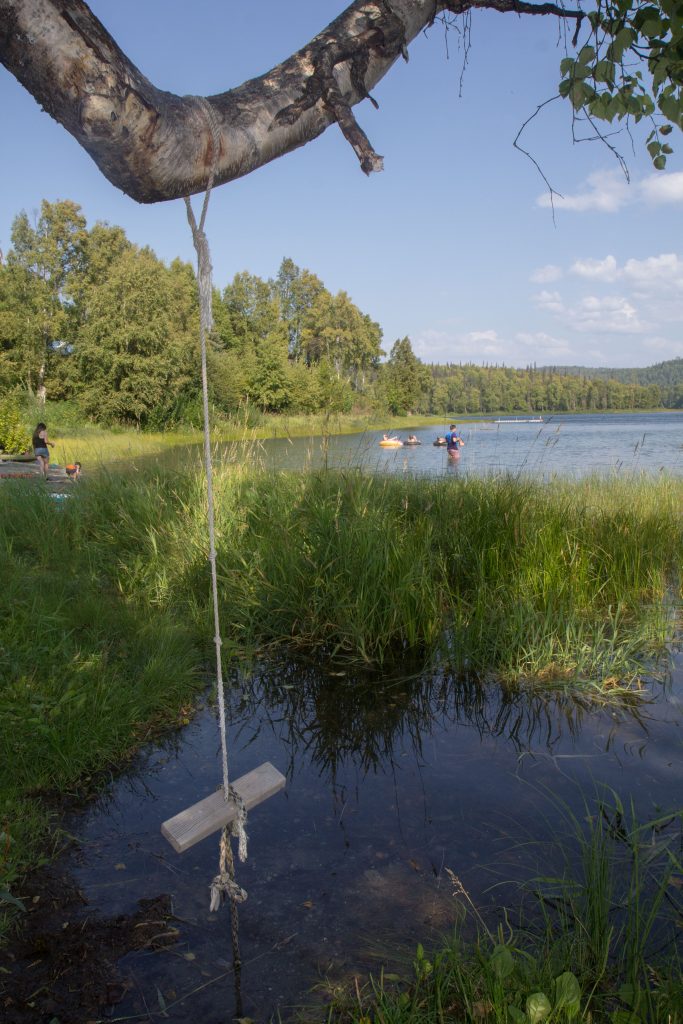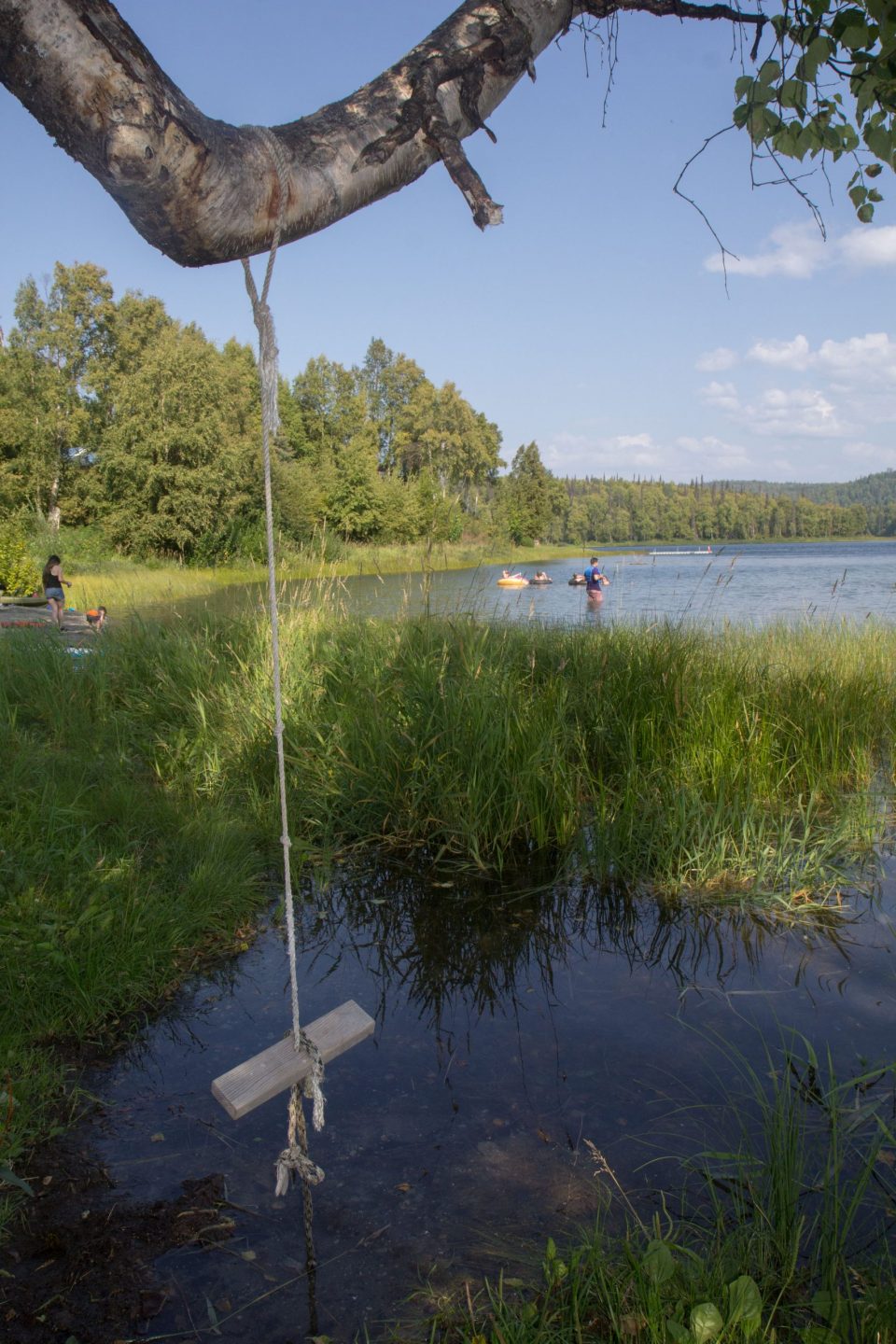Ever since the 1960’s, Eric Hestnes has been spending his summers at Christiansen Lake in Talkeetna. His father bought property there when he was a young boy. Hestnes and his sisters spent their time swimming, playing and trying to identify to all the various bird calls on the lake.

But in 2017, Hestnes was
introduced to a variety of new noises. Blasting, rock crushing, rip rap loading
and trucks beeping as they backed up.
And it wasn’t just a few hours during weekdays. It was all hours of the day and night, seven
days a week.
Hestnes learned that the a
parcel of land he had always known to be vacant, was now being used to mine rip
rap for a project designed to repair the Talkeetna dyke, damaged by the 2012
flood. After learning about the project,
he thought the noise would be temporary, for one summer only, as the necessary
repairs on the dyke were performed.
But the next summer the noise
continued.
” The first year was more noise than we thought or imagined, but you know, we got through that, it was the next year, then the explosions started, the blasting, and it was just horrendous. There was never notice, to anybody that we knew. It was just any time of day or night. I can’t tell you how loud these explosions are. We thought some huge propane tank had blown up or something like that. We had no idea what was going on.”
Residents learned that in
2012, the Department of Natural Resources had officially labeled this parcel a
“designated materials site”, meaning that material can be extracted and sold on
an ongoing basis without notice to local residents.
But many area residents object
to the designation. According to
documents from DNR, the only sites that were supposed to be considered under
this classification, were sites determined suitable for material extraction
through previously conducted studies, sites that had been in use since January
1, 2000, and sites that didn’t conflict with local area land management plans.
This parcel doesn’t satisfy
any of those requirements. Hestnes
explains what he remembers happening at the site throughout the years.
“It had always been just a gravel pit. The only activity over there was people that used to shoot over there. They’d bring their guns and they’d shoot at targets or old refrigerators or whatever they brought over there. That’s all it really was. There was no activity. And so, we were surprised that this was considered a quarry.”
There are a variety of local
area management plans, including Christiansen Lake Plan, Talkeetna Lake Parks
Plan and the Susitna Matanuska Area Plan, and none of these plans identify this
lot as an active materials site.
Instead, the plans emphasize area stakeholders’ wishes for quiet
recreation and residential living.
The site in question covers
154 acres and residents are worried that DNR might expand and develop the
entire parcel into a perpetual rip rap quarry.
Over 40 people have written letters objecting to the noise levels, hours
of operation and lack of environmental studies.
Studies like a Storm Water Pollution Protection Plan, that might ensure
that material extraction is safe for local drinking water or safe for local
fish.
Some residents of Christiansen
Lake live less than half mile away from this parcel. And, although the hours of operations this
summer were limited from 8am to 8pm,
Hestnes describes some of the changes he’s seen at the lake since the activity
started in 2017.
“It’s the small things. There’s a huge decrease in bird life here. You know, swans used to live here. Generations I’d say of birds used to come here. Now I think three loons and we have a couple grebes and that’s it. Once the blasting and construction noises started two years ago, there was a rapid decrease in that. You know, it’s shocking that this could occur in our backyard. Could you imagine this happening in Anchorage anywhere? There would be any number of things to stop this.”
For now, material extraction
at the parcel is scheduled to occur through November of this year and possibly
indefinitely.


